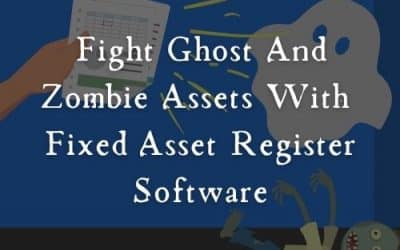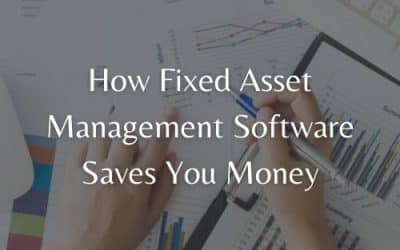Wish to track your manufacturing equipment to make your life easier? This article shows you how using an equipment tracking system helps!
Top Five Tools Tracking Software Features
Top Five Tools Tracking Software Features
Equipment and tools tracking software, a must-have for any fast-paced company that has to work with different kinds of tools. But when it comes to choosing the right tool tracking software solution, things can get a bit overwhelming.
If you’re an entrepreneur or team manager, you’ve already got a lot on your plate. You don’t have enough time to thoroughly review each piece of asset tracking software and try to decide the best one for you.
Worry not, because you’ll have an answer by the end of this 4-minute read. We’re going to tell you about the top five features you should look for in tool tracking software, and if you find one offering them all, you’ll be able to reach a decision much quicker.
Why Do You Need To Choose the Right Tools Tracking Software?
When you’re looking for tools tracking software, you’re not just searching the internet for any other app. You’re making a significant decision that will affect your team’s performance in the future. If you manage to strike the right chords, you’ll most likely see your productivity shoot up in the upcoming months.
However, if you land on a poor choice for a tools tracking app, you might not be able to do much with it. We are here to make sure whatever investment you make gives you handsome returns.
So what are the criteria that help you decide the right tools tracking software? We believe it primarily depends on everything you can do with it. The greater flexibility and scalability it offers, the better! Apart from that, here are the five things your tool tracking software must have:
1. GPS Asset Tracking Capabilities For Higher Performance
Did you know that the average construction employee spends 90 minutes of their work time every day just looking around for tools and equipment? That average can multiply up to outrageous amounts of wasted time when we look at multiple employees! A tool tracking app that lets users locate tools can reduce this misspent time significantly.
Equipment tracking software should allow you to see where your vital tools and equipment are. You may wish to choose a system that has a GPS tracker option that allows you to tag assets with individual trackers that update a tool’s location automatically. Or alternatively, you can use QR codes/barcodes and still benefit from GPS location tracking thanks to smart systems recording GPS addresses for all tools just by scanning the QR code/barcode on an asset. So whenever a team member can’t seem to find a piece of equipment in the usual places, they can look it up in the app and save themselves and the company plenty of time.
2. Check In Check Out Functionality
We often end up looking all around the office or site for a tool, searching every nook and cranny, but all in vain. Turns out, another team member took that tool out of the workplace yesterday. You could’ve avoided spending your time pointlessly if you knew the item was not there in the first place.
Tools tracking software that lets you mark items as ‘checked out’ whenever you’re taking them out is the perfect solution! This way, your team members can open the tool’s asset profile to see where it is and with whom. So just like location tracking, the equipment checkout feature in tools tracking software saves you a lot of time.
3. Ability Book Tools and Equipment in Advance
A tool tracking app that lets you or your employees book tools and equipment in advance allows you to plan ahead and make the most out of your time. This feature minimises uncertainty and boosts productivity.
An equipment booking feature is a must-have because it lets your team members synchronise together so you can get more things done. For instance, if you need an item next week, you could book it for the dates you need it on so that it’s available. If you couldn’t book it, you might find that someone else is using that tool when you need it, resulting in prolonged delays.
4. Issue Reporting and Management
When you’re working with a lot of tools and equipment, running into malfunctioning equipment and asset issues is not uncommon. Being able to report issues directly from the tools tracking app is a great functionality that can streamline your asset management.
The issue tracking feature lets you report all problems with an item directly from the asset profile. When you report, managers or admins get notified immediately via the tools tracking app so that they can initiate the required maintenance procedure. Go for a tools tracking solution that has this feature if you don’t want to keep nagging your manager to get the copier repaired.
5. Asset Tagging
Last but not least, asset tags can supercharge your tools tracking, speed things up and make the tools register much more accurate and up-to-date. The software solution should ideally be able to work with asset tags where you can tag an item and scan it via an app, with no need to purchase any additional hardware.
With asset tags, you can easily identify each of your assets without having to look up their name in the asset register. Using tags also makes it easier for you to update tool locations quickly.
itemit Does it All!
Well, that’s quite a lot of unique and amazing functionalities to find all in one solution. But guess what? itemit can do it all.
From GPS location tracking to asset tags, it has all the five features plus a lot more that make it the one to go for. Not only that, itemit is the most scalable solution you’re going to find because it can work with every department!
Check out all the things itemit can do with a 14-day free trial. Fill in the form below to begin. Or if you have any queries, feel free to contact the folks at itemit at team@itemit.com.
Tools Tracking Software
Choose a better way to track your assets
Start your free 14-day trial now
Instant access. No credit card details required.
Related articles
How To Track Manufacturing Equipment
Asset Management Software: An Introduction
What is asset management software? how can a software asset register help you to organise and take control of your assets? Read this post to find out!
Why Fixed Assets Should Be Tracked
Does your business have a lot of fixed assets? Read this article now to learn why using a fixed asset register can help your business to succeed!








